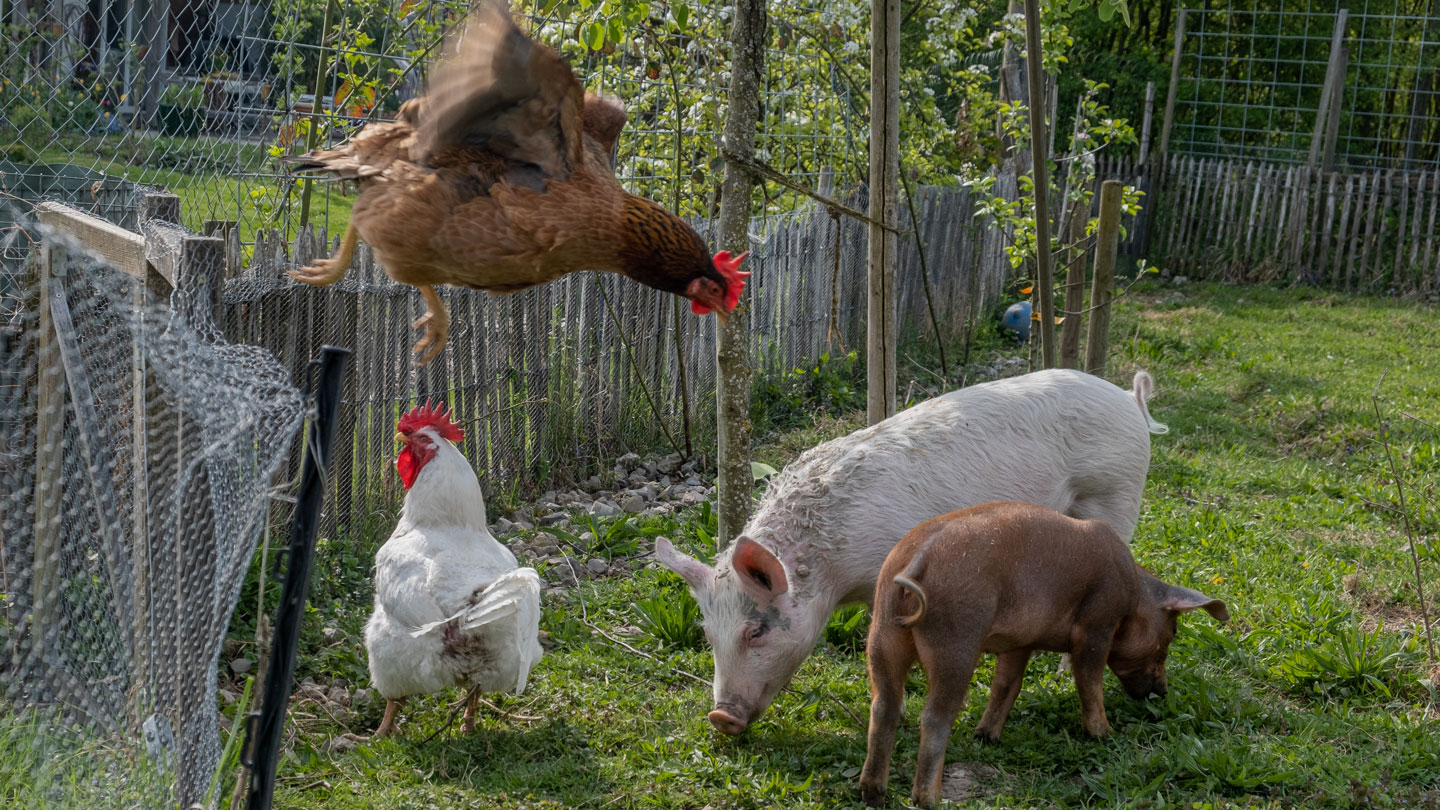Why finding bird flu in a U.S. pig for the first time is raising new worries

At least one pig has picked up bird flu amid an outbreak in poultry on a backyard farm in central Oregon.
While the infection appears limited to one farm so far, the discovery has raised new alarm bells thanks to pigs’ role as a kind of mixing pot for influenza viruses, potentially leading to genetic mutations that can put people at risk.
Here’s what we know so far about the case and potential risks.
This is the first time a pig in the United States has been infected with this strain of bird flu, called H5N1, the U.S. Department of Agriculture announced on October 30. A necropsy of the pig, one of five on the farm, showed the animal had signs of the virus throughout its body, according to a news report from STAT. Two others had no signs of the virus and results for the remaining two pigs are still pending.
Other animals on the farm, including sheep and goats, are under quarantine to prevent further spread of the virus. As none of the pigs were intended for commercial food, USDA officials aren’t concerned about the U.S. pork supply. Still, the news comes as H5N1 continues to spread among wild birds and mammals, and an outbreak in U.S. dairy cows continues to grow.
Right now, there are more questions than answers about the case, including how the pig got infected and whether the virus poses a threat of one day spreading pig-to-pig on larger farms. But swine present a distinctive threat when it comes to influenza — one that raises concerns about how H5N1 might affect pigs, and also people.
The risk to people comes from pigs’ long-time standing as flu “mixing vessels.” Influenza viruses break into cells by attaching to a sugar called sialic acid. Viruses from birds and humans typically bind to different kinds of these sialic acid receptors. As a result, avian flus usually aren’t great at infecting people, and vice versa.
But pigs have both birdlike and humanlike receptors, making them susceptible to not only swine-specific flu strains but also to viruses from birds and humans. If a bird virus and a human virus were to infect the same pig, this provides an opportunity for the viruses to swap genes in a process called reassortment. That can help avian flus adapt in ways that make them better at infecting people, with sometimes devastating consequences.
Pigs are the suspected source of the strain behind the 1918 influenza pandemic (SN: 10/27/21). And the 2009 “swine flu” pandemic started in pigs (SN: 5/22/09). A reassortment event may have also happened prior to the ongoing cattle outbreak (SN: 5/16/24).
Experts across the United States have been keeping a close eye on H5N1 since it began its intrusion into the country in 2022. As mammals from wild foxes and marine mammals to dairy cattle fell ill, researchers have scoured viral genetic material from animal samples for mutations that could mean the virus is adapting to spread mammal-to-mammal rather than to mammals from wild birds or poultry (SN: 3/6/23).
So far, some changes that help avian-origin viruses multiply in human cells have popped up in viruses circulating among animals, including sea lions and cattle, as well as some isolated cases in farmers exposed to dairy cows. But a host of other changes also need to happen for avian flus to break the species barrier and efficiently spread among people. That list includes evading parts of our immune systems and switching to using human sialic acid receptors rather than bird versions to break inside cells (there’s inconclusive evidence over whether that has occurred).
These traits can come together when flu viruses exchange genes in pigs. Although H5N1 viruses have historically spread poorly among pigs, swine are susceptible to at least some versions of H5N1 from the ongoing outbreak, researchers reported in the April Emerging Infectious Diseases.
For now, with just one pig on one farm having a confirmed infection, the threat of an outbreak in people remains theoretical. But if H5N1 ever spreads to more pigs on larger farms, the risk of a human pandemic could be much more worrisome.
Source link

